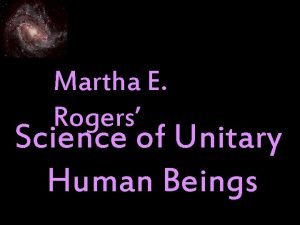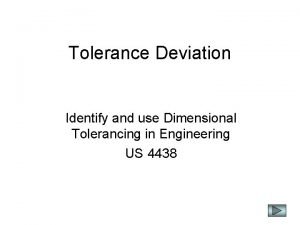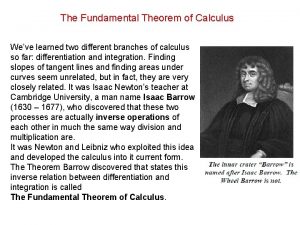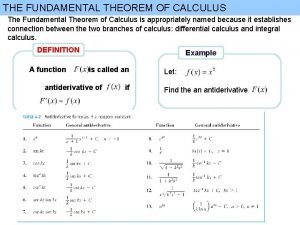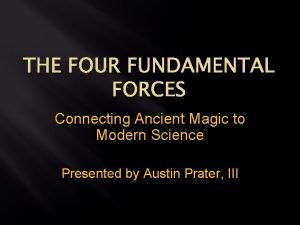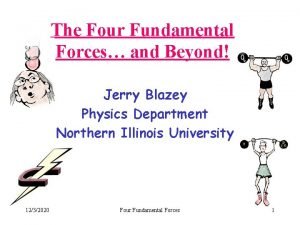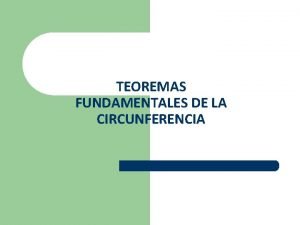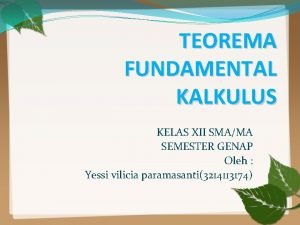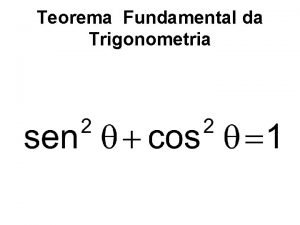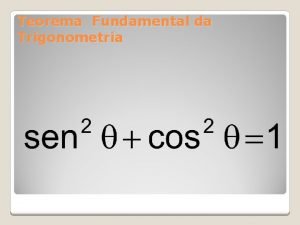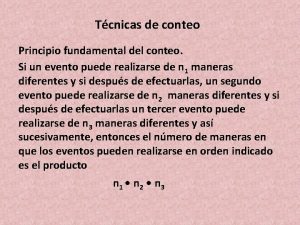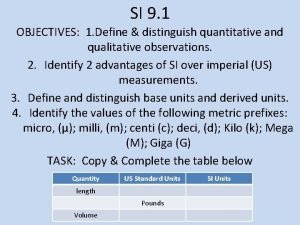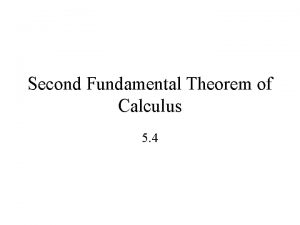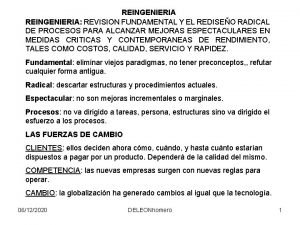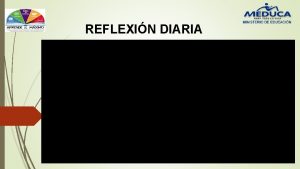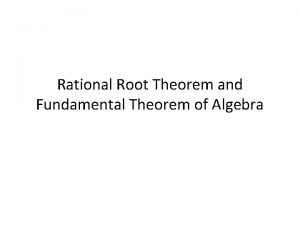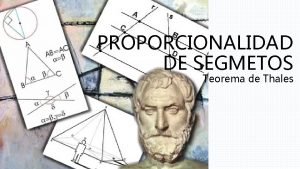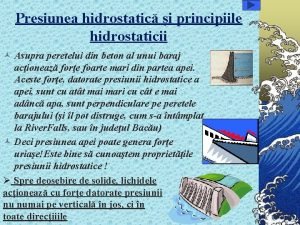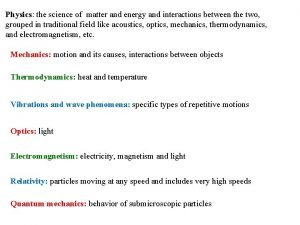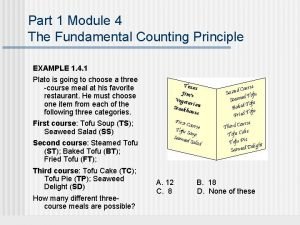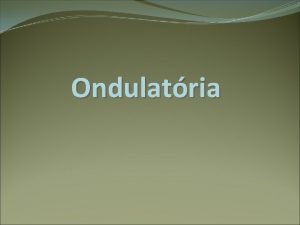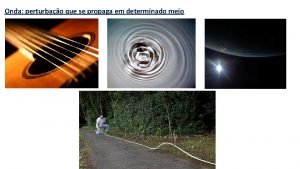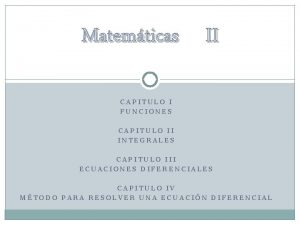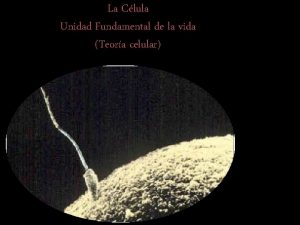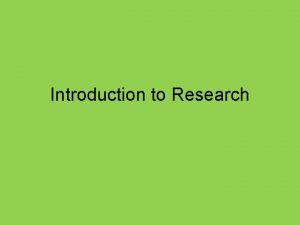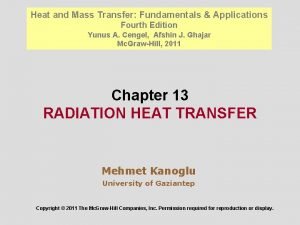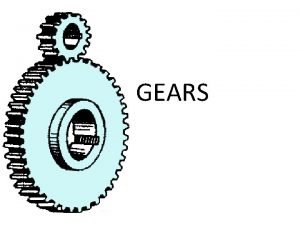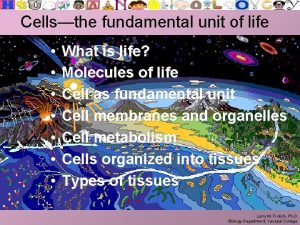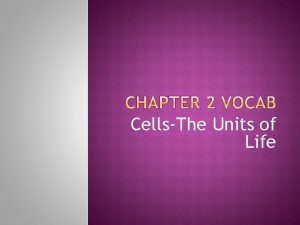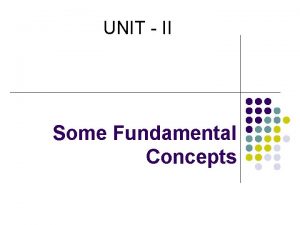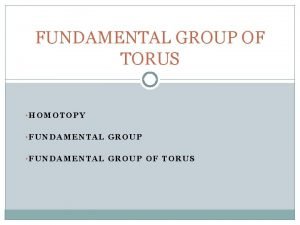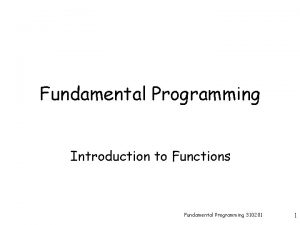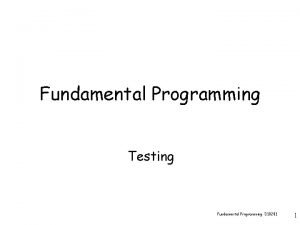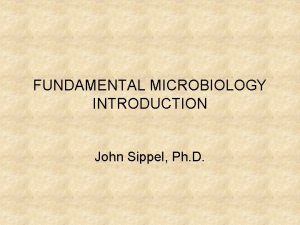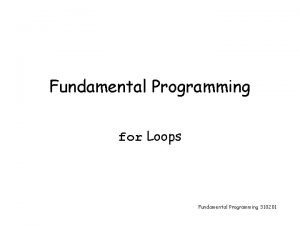Cellsthe fundamental unit of life What is life



































































- Slides: 67

Cells—the fundamental unit of life • • What is life? Molecules of life Cell as fundamental unit Cell membranes and organelles Cell metabolism Cells organized into tissues Types of tissues Larry M. Frolich, Ph. D. Biology Department, Yavapai College

Cells—the fundamental unit of life • What is life? • • • Molecules of life Cell as fundamental unit Cell membranes and organelles Cell metabolism Cells organized into tissues Types of tissues Larry M. Frolich, Ph. D. Biology Department, Yavapai College

What is Life? • Life needs energy • Life reproduces • Life grows and develops • Life maintains a stable condition— homeostasis • Life responds to stimulus • Life is organized because it has evolved Larry M. Frolich, Ph. D. Biology Department, Yavapai College

Humans Evolve • Life is organized hierarchically • Evolution explains organization at every level of hierarchy • Humans can be understood at every level of hierarchy • Humans have evolved and are evolving Larry M. Frolich, Ph. D. Biology Department, Yavapai College

Cells are fundamental unit of life • Cells are the basic and fundamental unit of life • The first life was cellular life • The Molecules of Life are what cells and all their internal parts are made up of Larry M. Frolich, Ph. D. Biology Department, Yavapai College

Cells—the fundamental unit of life • What is life? • Molecules of life • • • Cell as fundamental unit Cell membranes and organelles Cell metabolism Cells organized into tissues Types of tissues Larry M. Frolich, Ph. D. Biology Department, Yavapai College

The Carbon-chain Molecules of Life MOLECULE MADE OF FUNCTION Carbohydrates Simple Sugars Energy Proteins Amino Acids Fatty Acids DNA/RNA Nucleotides (bases) Catalyze reactions Cell membranes Information Larry M. Frolich, Ph. D. Biology Department, Yavapai College

Carbohydrates • Components are simple sugars • Used for energy storage in complex form • Broken down to simple sugars to fuel cellular metabolism in mitochondria • So, why are simple sugars bad for us? And why do we love them so much? (p. 29 in text) Larry M. Frolich, Ph. D. Biology Department, Yavapai College

Proteins • Components are amino acids • Very complicated • Amino acid chain folds up to give complex form • Complex form allows for catalyzing very specific chemical reactino • Gen. Blue Larry M. Frolich, Ph. D. Biology Department, Yavapai College

Fats/Lipids • Fundamental to life and origins—separate cell interior from environment as cell membrane • Mammals and other vertebrates—long-term energy storage • Role in diet=big controversy! Larry M. Frolich, Ph. D. Biology Department, Yavapai College

DNA/RNA (Nucleic Acids) • DNA and RNA store and use information • Components are nucleotides or “bases” (A, C, T/U, G) • One DNA molecule can be very long and complex—millions of bases long • DNA duplicates to pass on information • Transcription to m. RNA to be translated into protein’s amino acid chain Larry M. Frolich, Ph. D. • What do proteins do? Biology Department, Yavapai College

Cells—the fundamental unit of life • What is life? • Molecules of life • Cell as fundamental unit • • Cell membranes and organelles Cell metabolism Cells organized into tissues Types of tissues Larry M. Frolich, Ph. D. Biology Department, Yavapai College

Cells are fundamental unit of life • Cells are the basic and fundamental unit of life • The first life was cellular life • The Molecules of Life are what cells and all their internal parts are made up of Larry M. Frolich, Ph. D. Biology Department, Yavapai College

Two types of cells • Prokaryotic cells – Relatively Simple – Relatively Small – No organelles with Molecules of Life distributed throughout cytoplasm – Bacteria are all prokaryotic cells • Eukaryotic cells – More complex – Much bigger (100 x size of prokaryotic cells) – Internally organized with membrane-bound organelles – Multi-cellular organisms, like plants and animals, are all made up of eukaryotic cells Larry M. Frolich, Ph. D. Biology Department, Yavapai College

Eukaryotic cell Larry M. Frolich, Ph. D. Biology Department, Yavapai College

Endosymbiotic origin of mitochondria and chloroplasts • Eukaryotic cells evolved from fusion or integration of prokaryotic cells • Best evidence is in bacterial or prokaryotic appearance of mitochondria and chloroplasts • These organelles are like little bacterial cells within our cells, now fully functionally integrated • They perform fundamental cell functions. Mitochondria process sugars to produce energy; chloroplasts make sugars by photosynthesis • But they maintain their own DNA and genetic control Larry M. Frolich, Ph. D. Biology Department, Yavapai College

Prokaryotic cells have: • Cell membrane • DNA molecule loose in cytoplasm • Small Ribosomes where proteins are assembled from DNA information • Microtubule structures like flagella and cilia • Mitochondria and chloroplasts share most of these features, including their own independent DNA Larry M. Frolich, Ph. D. Biology Department, Yavapai College

Eukaryotic cells (like our human cells) have: WHAT EUKARYOTIC CELLS HAVE: • Cell membrane • Nucleus • Mitochondria (and sometimes chloroplasts for photosynthesis) • Larger ribosomes for protein assembly from DNA information • Internal membranes that organize cellular spaces and distribution of Molecules of Life within cell (“cytoskeleton”) Larry M. Frolich, Ph. D. Biology Department, Yavapai College

WHAT CAN EUKARYOTIC CELLS DO? WHAT STRUCTURES ARE INVOLVED? Separate inside of cell from external environment and control what substances pass across membrane Cell Membrane Produce proteins/enzymes that catalyze chemical reactions or control movement across membrane Nucleus (DNA), Ribosomes on rough endoplasmic reticulum Break down sugars to form energy which is stored in phosphate bonds of ATP Mitochondria Organize distribution of Molecules of Life (macromolecules) and ions throughout cell Internal membrane system and “cytoskeleton” (ER, lysosomes, vessicles, microtubules) Move Flagella, cilia, pseudopods Larry M. Frolich, Ph. D. Biology Department, Yavapai College

Cells—the fundamental unit of life • What is life? • Molecules of life • Cell as fundamental unit • Cell membranes and organelles • • • Cell metabolism Cells organized into tissues Types of tissues Larry M. Frolich, Ph. D. Biology Department, Yavapai College

A cell membrane or plasma membrane separates cell from outside world—creates ability to regulate internal environment (homeostasis) Larry M. Frolich, Ph. D. Biology Department, Yavapai College

cell membrane Larry M. Frolich, Ph. D. Biology Department, Yavapai College

cell membrane What are some characteristics of the plasma membrane? • It is a phospholipid bilayer • It is embedded with proteins that move in space • It contains cholesterol for support • It contains carbohydrates on proteins and lipids • Selectively permeable Larry M. Frolich, Ph. D. Biology Department, Yavapai College

cell membrane What does selectively permeable mean? • The membrane allows some things in while keeping other substances out Larry M. Frolich, Ph. D. Biology Department, Yavapai College

cell membrane How do things move across the plasma membrane? 1. 2. 3. 4. 5. Diffusion Osmosis Facilitated transport Active transport Endocytosis and exocytosis Larry M. Frolich, Ph. D. Biology Department, Yavapai College

cell membrane What are diffusion and osmosis? • 1. Diffusion is the random movement of molecules from a higher concentration to a lower concentration • 2. Osmosis is the diffusion of water molecules Larry M. Frolich, Ph. D. Biology Department, Yavapai College

cell membrane How does tonicity change a cell? • Hypertonic solutions have more solute than the inside of the cell and lead to lysis (bursting) • Hypotonic solutions have less solute than the inside of the cell and lead to crenation (shriveling) • Isotonic solutions have equal amounts of solute inside and outside the cell and thus does not affect the cell Larry M. Frolich, Ph. D. Biology Department, Yavapai College

cell membrane What are facilitated diffusion and active transport? • 3. Facilitated transport is the transport of molecules across the plasma membrane from higher concentration to lower concentration via a protein carrier • 4. Active transport is the movement of molecules from a lower to higher concentration using ATP as energy; requires a protein carrier Larry M. Frolich, Ph. D. Biology Department, Yavapai College

What are endocytosis and exocytosis? cell membrane • 5. Endocytosis transports molecules or cells into the cell via invagination of the plasma membrane to form a vesicle • 6. Exocytosis transports molecules outside the cell via fusion of a vesicle with the plasma membrane Larry M. Frolich, Ph. D. Biology Department, Yavapai College

Protein synthesis • Remember that proteins control cell metabolism—how and where are they made, or synthesized in the cell? Larry M. Frolich, Ph. D. Biology Department, Yavapai College

Protein synthesis What structures are involved in protein synthesis? • Nucleus • Ribosomes • Endomembrane system Larry M. Frolich, Ph. D. Biology Department, Yavapai College

Protein synthesis What is the structure and function of the nucleus? • Bound by a porous nuclear envelope • Houses DNA and associated proteins called chromatin • Contains nucleoplasm • Nucleolus region(s) that contain ribosomal RNA (r. RNA) Larry M. Frolich, Ph. D. Biology Department, Yavapai College

Protein synthesis What is the structure and function of ribosomes? • Organelles made of RNA and protein • Found bound to the endoplasmic reticulum and free floating in the cell • Site of protein synthesis Larry M. Frolich, Ph. D. Biology Department, Yavapai College

Protein synthesis What is the endomembrane system? • A series of membranes in which molecules are transported in the cell • It consists of the nuclear envelope, endoplasmic reticulum, Golgi apparatus, lysosomes and vesicles Larry M. Frolich, Ph. D. Biology Department, Yavapai College

How does the endomembrane system function and appear? Protein synthesis Larry M. Frolich, Ph. D. Biology Department, Yavapai College

Protein synthesis Summary of the parts of the endomembrane system? • Rough endoplasmic reticulum – studded with ribosomes used to make proteins • Smooth endoplasmic reticulum – lacks ribosomes but aids in making carbohydrates and lipids • Golgi apparatus – flattened stacks that process, package and deliver proteins and lipids from the ER • Lysosomes – membranous vesicles made by the Golgi that contain digestive enzymes • Vesicles – small membranous sacs used for transport Larry M. Frolich, Ph. D. Biology Department, Yavapai College

What are cilia and flagella? • Both are made of microtubules • Both are used in movement • Cilia are about 20 x shorter than flagella Larry M. Frolich, Ph. D. Biology Department, Yavapai College

What do mitochondria do and what do they look like? • A highly folded organelle in eukaryotic cells • Produces energy in the form of ATP • They are thought to be derived from an engulfed prokaryotic cell Larry M. Frolich, Ph. D. Biology Department, Yavapai College

Cells—the fundamental unit of life • • What is life? Molecules of life Cell as fundamental unit Cell membranes and organelles • Cell metabolism • Cells organized into tissues • Types of tissues Larry M. Frolich, Ph. D. Biology Department, Yavapai College

• • What is cellular respiration? Occurs in the mitochondria Production of ATP in a cell Usually glucose is main “energy” molecule enters cellular respiration Includes: – – – Glycolysis Citric acid cycle 3. Electron transport chain Larry M. Frolich, Ph. D. Biology Department, Yavapai College

What other molecules besides glucose can be used in cellular respiration? • Other carbohydrates • Proteins • Lipids Larry M. Frolich, Ph. D. Biology Department, Yavapai College

How can a cell make ATP without oxygen? • Fermentation – Occurs in the cytoplasm – Does not require oxygen – Involves glycolysis – Makes 2 ATP and lactate in human cells – Is important in humans for a burst of energy for a short time Larry M. Frolich, Ph. D. Biology Department, Yavapai College

All of cell metabolism • Cell metabolism is much more than simply making ATP, or cellular respiration, which is just how the cell has an energy supply. • What does the cell do with that energy? • Get ready for what you are about to see… • The cell runs all the reactions that make it alive— see the first part of this presentation: grow, reproduce, develop, move, maintain internal homeostasis, respond to stimuli. • This involves a LOT of chemical reactions. • Here it is: most of the reactions involved in keeping the simplest of cells—an E. coli bacteria— alive! Larry M. Frolich, Ph. D. Biology Department, Yavapai College

Ecocyc—database of complete E. coli metabolism Larry M. Frolich, Ph. D. Biology Department, Yavapai College

What’s it all mean? • • • Every little box represents a stage in a particular chemical reaction. The sum of those reactions is the total cell metabolism—what makes the cell alive! You’ll actually visit the ecocyc database under the web links for this section as the last thing you do Remember three things: 1. every one of these reactions is catalyzed by a protein 2. The amino acid sequence for those proteins are coded for in the DNA 3. The world’s biggest super-computers are trying to figure out how, based on their unique amino acid sequence, all the different cellular proteins take on the particular shape they have, and control the particular reaction they catalyze. (You’ll also visit the Blue Gene IBM super-computer website in the web links for this section. ) Larry M. Frolich, Ph. D. Biology Department, Yavapai College

Blue Gene Larry M. Frolich, Ph. D. Biology Department, Yavapai College

Cells—the fundamental unit of life • • • What is life? Molecules of life Cell as fundamental unit Cell membranes and organelles Cell metabolism • Cells organized into tissues • Types of tissues Larry M. Frolich, Ph. D. Biology Department, Yavapai College

What is a tissue? • • • Multi-cellular organisms are composed of millions and millions of cells whose metabolism is organized to work together. A tissue is a collection of cells of the same type that perform a common function There are 4 major tissue types in the body: 1. 2. 3. 4. Connective Muscular Nervous Epithelial Larry M. Frolich, Ph. D. Biology Department, Yavapai College

How many cell types? How many cells? • Each class of tissue might include a number of different cell types. In total, our bodies have a few hundred different types of cells • How many total cells are in our body? Larry M. Frolich, Ph. D. Biology Department, Yavapai College

How many cells are in an adult human? Lots. More than anyone could count, and the bigger you are the more cells there would be. Growth is a process of cellular reproduction, so as you grow bigger you are made up of more cells. Following a similar logic, a larger person is larger because they have more cells, not because their cells are larger. In fact, cell types have a fairly uniform size across the entire human species. The largest and smallest cells in the human body are the gametes, or the sex cells. The female sex cell, the oocyte, is about 35 microns in diameter, which puts it just on the edge of being visible if you have real good eyes. The male sex cell, spermatozoan, cell is only about 3 microns in diameter, and therefore is the smallest cell of the human body. Various other cell types have various other sizes within this range. Although no exact number can be given, the order of magnitude of the number of cells in a human body can be approximated to 10 14 or one hundred trillion cells. Source: Mad. Sci Network http: //www. madsci. org/posts/archives/mar 98/889221957. An. r. html Larry M. Frolich, Ph. D. Biology Department, Yavapai College

Cells—the fundamental unit of life • • • What is life? Molecules of life Cell as fundamental unit Cell membranes and organelles Cell metabolism Cells organized into tissues • Types of tissues Larry M. Frolich, Ph. D. Biology Department, Yavapai College

1. Epithelial tissue • • • A groups of cells that form a tight, continuous network Lines body cavities, covers body surfaces and found in glands Cells are anchored by a basement membrane on one side and free on the other side Different types of epithelial cells are named after the appearance of cell layers and the shape of the cells There is transitional epithelium that changes in appearance in response to tension Larry M. Frolich, Ph. D. Biology Department, Yavapai College

What does epithelial tissue look like? Larry M. Frolich, Ph. D. Biology Department, Yavapai College

2. Connective tissue • • • Binds and supports parts of the body All have specialized cells, ground substance and protein fibers Ground substance is noncellular and ranges from solid to fluid The ground substance and proteins fibers together make up the matrix of the tissue There are three main types of connective tissue: A. fibrous , B. supportive and C. fluid Larry M. Frolich, Ph. D. Biology Department, Yavapai College

Connective tissue holds things together • • Tendon, fascia Bone Cartilage Throughout body supporting blood vessels, nerves, cell populations (like in bone marrow, blood) Larry M. Frolich, Ph. D. Biology Department, Yavapai College

3. Muscle tissue • Allows for movement in the body • Made of muscle fibers/cells and protein fibers called actin and myosin • There are 3 types of muscle tissue in humans: A. Skeletal B. Smooth C. Cardiac Larry M. Frolich, Ph. D. Biology Department, Yavapai College

4. Nervous tissue • Allows for communication between cells through sensory input, integration of data and motor output • Made of 2 major cell types: A. Neurons—carry messages B. Neuroglia—support neurons Larry M. Frolich, Ph. D. Biology Department, Yavapai College

Cells—the fundamental unit of life (review) • • What is life? Molecules of life Cell as fundamental unit Cell membranes and organelles Cell metabolism Cells organized into tissues Types of tissues Larry M. Frolich, Ph. D. Biology Department, Yavapai College

What is Life? • Life needs energy • Life reproduces • Life grows and develops • Life maintains a stable condition— homeostasis • Life responds to stimulus • Life is organized because it has evolved Larry M. Frolich, Ph. D. Biology Department, Yavapai College

The Carbon-chain Molecules of Life MOLECULE MADE OF FUNCTION Carbohydrates Simple Sugars Energy Proteins Amino Acids Fatty Acids DNA/RNA Nucleotides (bases) Catalyze reactions Cell membranes Information Larry M. Frolich, Ph. D. Biology Department, Yavapai College

Cells are fundamental unit of life • Cells are the basic and fundamental unit of life • The first life was cellular life • The Molecules of Life are what cells and all their internal parts are made up of Larry M. Frolich, Ph. D. Biology Department, Yavapai College

WHAT CAN EUKARYOTIC CELLS DO? WHAT STRUCTURES ARE INVOLVED? Separate inside of cell from external environment and control what substances pass across membrane Cell Membrane Produce proteins/enzymes that catalyze chemical reactions or control movement across membrane Nucleus (DNA), Ribosomes on rough endoplasmic reticulum Break down sugars to form energy which is stored in phosphate bonds of ATP Mitochondria Organize distribution of Molecules of Life (macromolecules) and ions throughout cell Internal membrane system and “cytoskeleton” (ER, lysosomes, vessicles, microtubules) Move Flagella, cilia, pseudopods Larry M. Frolich, Ph. D. Biology Department, Yavapai College

A cell membrane or plasma membrane separates cell from outside world—creates ability to regulate internal environment (homeostasis) Larry M. Frolich, Ph. D. Biology Department, Yavapai College

Protein synthesis • Remember that proteins control cell metabolism—how and where are they made, or synthesized in the cell? Larry M. Frolich, Ph. D. Biology Department, Yavapai College

Ecocyc—database of complete E. coli metabolism Larry M. Frolich, Ph. D. Biology Department, Yavapai College

What is a tissue? • • • Multi-cellular organisms are composed of millions and millions of cells whose metabolism is organized to work together. A tissue is a collection of cells of the same type that perform a common function There are 4 major tissue types in the body: 1. 2. 3. 4. Connective Muscular Nervous Epithelial Larry M. Frolich, Ph. D. Biology Department, Yavapai College

This initial review of life and cells is crucial! • Please read your book chapters, review the web links and get this part of the course. • We’ll come back to cells and how they work again and again. • I am aware this is a LOT of information! • But master this, and the rest of the course will seem easy. Larry M. Frolich, Ph. D. Biology Department, Yavapai College
 Unit 10, unit 10 review tests, unit 10 general test
Unit 10, unit 10 review tests, unit 10 general test Seven si units
Seven si units Difference between fundamental and derived unit
Difference between fundamental and derived unit The fundamental unit of the living system by roger’s is:
The fundamental unit of the living system by roger’s is: Unit 1 review fundamental economic concepts answers
Unit 1 review fundamental economic concepts answers Unit 1 fundamental skills
Unit 1 fundamental skills Grafik making decision is a fundamental life skill
Grafik making decision is a fundamental life skill Tabel proses smart choice(s)
Tabel proses smart choice(s) Tabel proses smart choice
Tabel proses smart choice Freetutorical.com harvest land
Freetutorical.com harvest land Metode pembiayaan langsung (direct financing method)
Metode pembiayaan langsung (direct financing method) Hyp opp adj
Hyp opp adj Si unit to english unit
Si unit to english unit Algebra 2 unit 1 test
Algebra 2 unit 1 test Unit cost rekam medis
Unit cost rekam medis Unit process and unit operation
Unit process and unit operation Unit operation and unit process
Unit operation and unit process Setiap unit akuntansi dianggap sebagai unit yang mandiri
Setiap unit akuntansi dianggap sebagai unit yang mandiri False contouring
False contouring Introduction of total quality management
Introduction of total quality management Fundamental deviation
Fundamental deviation Fundamental theorem.of algebra
Fundamental theorem.of algebra Calculus theorems
Calculus theorems Fundamental theorem of calculus
Fundamental theorem of calculus Four fundamental forces
Four fundamental forces Four fundamental forces
Four fundamental forces Teorema circunferencia
Teorema circunferencia Teorema fundamental kalkulus 1
Teorema fundamental kalkulus 1 Teorema fundamental del algebra ejercicios
Teorema fundamental del algebra ejercicios Sen = 1
Sen = 1 Lei fundamental da trigonometria
Lei fundamental da trigonometria 1ª série em - projeto de vida - tecendo relações
1ª série em - projeto de vida - tecendo relações Principio fundamental del conteo
Principio fundamental del conteo Fundamental theorem of statistics
Fundamental theorem of statistics Si standard units
Si standard units Fundamental deviation
Fundamental deviation Limit chain rule
Limit chain rule Difference between empirical and conceptual research
Difference between empirical and conceptual research Aktivitas fundamental dari proses perangkat lunak
Aktivitas fundamental dari proses perangkat lunak Rediseo
Rediseo Meduca dfa
Meduca dfa Rational zero theorum
Rational zero theorum Segmetos
Segmetos What is the fundamental concept behind premium marketing?
What is the fundamental concept behind premium marketing? Principiul fundamental al hidrostaticii formula
Principiul fundamental al hidrostaticii formula Position used in nursing patient
Position used in nursing patient Starting and derived positions
Starting and derived positions 7 fundamental si units
7 fundamental si units Combinations and permutations
Combinations and permutations Combination math formula
Combination math formula Fundamental theorem of counting
Fundamental theorem of counting Ondas
Ondas Ondas eletromagneticas
Ondas eletromagneticas Qsn fundamental
Qsn fundamental 7 fundamental units
7 fundamental units 8h8 tolerance
8h8 tolerance Primer teorema fundamental del calculo
Primer teorema fundamental del calculo Magnitud
Magnitud Counting principle formula
Counting principle formula Contradicción económica fundamental del capitalismo
Contradicción económica fundamental del capitalismo Niveles de organización biológica de los seres vivos
Niveles de organización biológica de los seres vivos Conceptual vs empirical
Conceptual vs empirical Five fundamental
Five fundamental Fundamental five
Fundamental five Identitas penjelasan
Identitas penjelasan Identitas fundamental adalah
Identitas fundamental adalah Heat transfer radiation
Heat transfer radiation Beam strength of gear tooth definition
Beam strength of gear tooth definition



